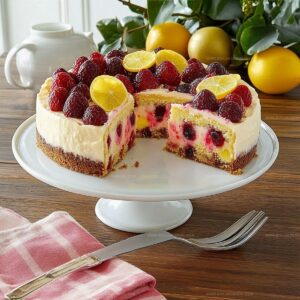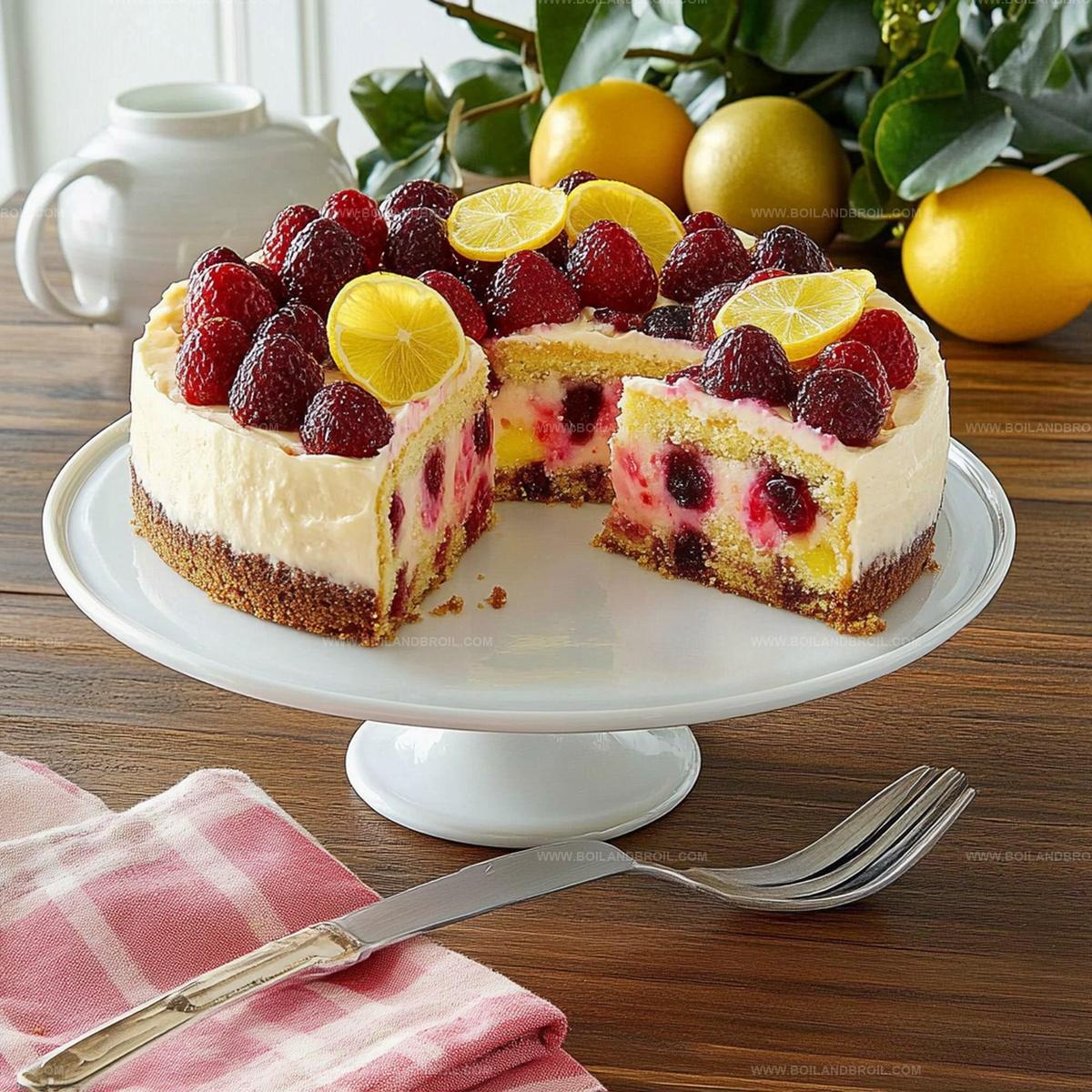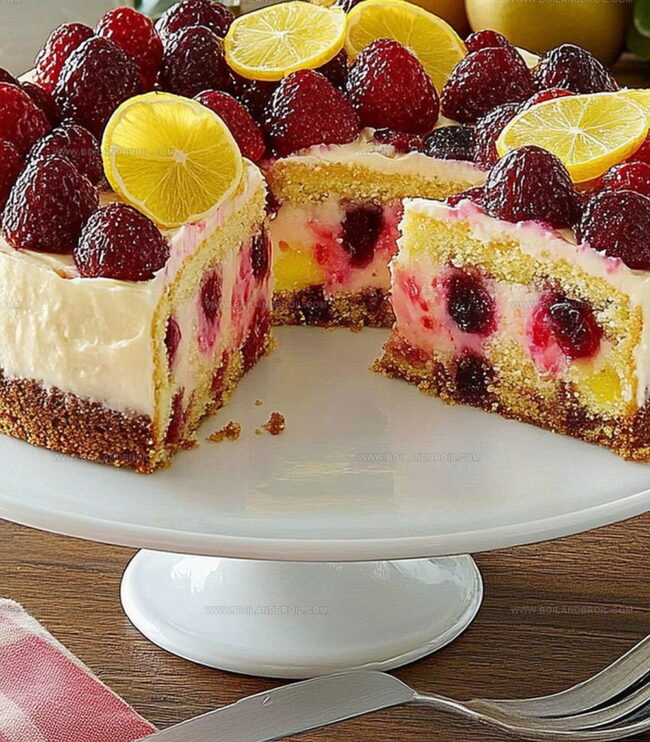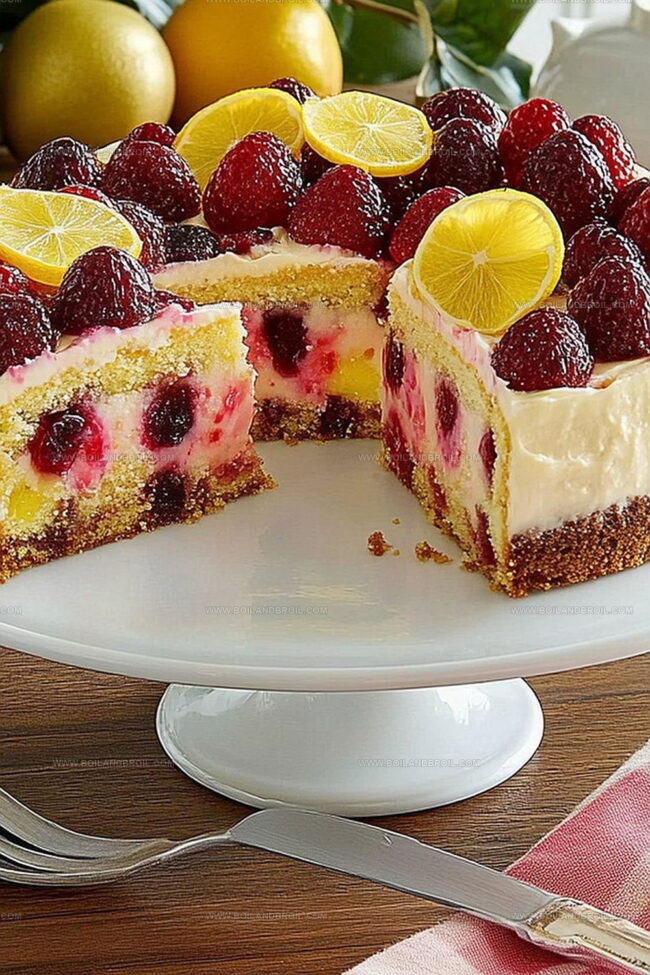Easy Easter Fruit Cake Recipe: A Sweet Springtime Treat
Sweet memories of childhood holidays dance through my Easter fruit cake recipe, filling the kitchen with nostalgic aromas.
Grandmothers across generations have cherished similar treats passed down through family traditions.
Plump raisins and candied cherries peek through a golden, moist crumb that promises delightful textures.
Warm spices whisper stories of festive gatherings and shared moments around the table.
Mixing bowls become vessels of culinary magic, blending simple ingredients into something extraordinary.
A slice of this cake connects you to generations of baking love.
You’ll want to savor every delectable bite of this treasured seasonal delight.
What You Need to Bake an Easter Fruit Cake
Main Ingredients:Dried Fruits:Spices and Seasonings:Preparation Ingredients:How to Layer and Bake Easter Fruit Cake
Step 1: Prep the Oven and Pan
Get your oven warmed up to 325F.
Grab a round cake pan and coat it with butter or cooking spray, then line the bottom with parchment paper for easy cake removal.
Step 2: Mix Dry Ingredients
Grab a mixing bowl and sift together:Set this powdery mixture aside for later.
Step 3: Create a Creamy Base
Using an electric mixer, blend softened butter and sugar until the mixture looks light and fluffy.
Add eggs one at a time, mixing thoroughly after each addition.
Step 4: Combine Wet and Dry Ingredients
Slowly add the dry ingredient mixture into the wet ingredients.
Stir gently until everything is just combined – don’t overmix!
Step 5: Fold in Fruity Goodness
Gently fold in a mix of dried fruits like raisins, currants, and candied citrus peel.
Distribute them evenly throughout the batter.
Step 6: Bake to Perfection
Pour the batter into your prepared pan.
Slide it into the preheated oven and bake for 50-60 minutes.
Check doneness by inserting a toothpick – it should come out clean.
Step 7: Cool and Serve
Let the cake rest in the pan for 10 minutes.
Then transfer to a wire rack to cool completely.
Slice and enjoy your festive Easter treat!
Pro Tips for Moist, Fruit-Laden Cake Layers
Storing and Serving Easter Fruit Cake
Pairing Ideas for Fruit Cake and Tea
Unique Fruit Cake Variations for Spring
FAQs
Fresh fruits have higher water content and might make the cake soggy. Stick to dried mixed fruits for the best texture and consistent results.
The recipe contains eggs and wheat flour, so it’s not gluten-free or vegan. Those with specific dietary needs should look for alternative recipes.
Insert a toothpick into the center of the cake. If it comes out clean with no wet batter, the cake is fully baked. The top should also be golden brown and slightly firm to touch.
For best results, follow the recipe precisely. Minor substitutions like using brown sugar instead of white sugar might work, but significant changes could affect the cake’s texture and taste.
Festive Easter Fruit Cake Layered with Joy
Print
Easter Fruit Cake Recipe
- Total Time: 1 hour 15 minutes
- Yield: 8 1x
Description
Sweet Easter celebrations come alive with this classic Easter Fruit Cake, brimming with candied fruits and rich spices. Festive European baking traditions shine through each delectable slice, inviting you to savor the warmth of holiday memories.
Ingredients
Main Ingredients:
- 3 large eggs
- 1/2 cup (113 grams) unsalted butter, softened
- 1 1/2 cups (225 grams) dried mixed fruits (raisins, apricots, cranberries, cherries)
- 2 cups (240 grams) all-purpose flour
- 1 cup (200 grams) granulated sugar
Leavening and Spice:
- 2 teaspoons baking powder
- 1 teaspoon ground cinnamon
Instructions
- Prepare the oven by heating to 325F (165C) and prepare a round cake pan with parchment paper and a light coating of grease.
- Combine flour, baking powder, cinnamon, and salt through a fine sieve, setting the dry mixture aside for later incorporation.
- Using an electric mixer, blend butter and sugar until the mixture becomes airy and pale, creating a smooth base for the cake.
- Introduce eggs individually into the butter mixture, ensuring thorough integration after each addition to maintain a consistent texture.
- Gently incorporate the prepared dry ingredients into the wet mixture, stirring with minimal agitation to prevent overworking the batter.
- Carefully distribute dried mixed fruits throughout the batter, ensuring even dispersion for consistent flavor in each slice.
- Transfer the completed batter into the prepared cake pan, spreading it evenly to create a uniform surface.
- Place the pan in the preheated oven and bake for 50-60 minutes, monitoring for a golden exterior and checking doneness with a inserted toothpick.
- Once baked, remove from the oven and allow the cake to rest in the pan for 10 minutes to stabilize its structure.
- Carefully transfer the cake to a wire cooling rack, permitting it to cool completely before serving or decorating.
Notes
- Prep fruits by soaking them overnight in brandy or orange juice to enhance flavor and prevent sinking during baking.
- Choose room temperature ingredients to ensure smooth mixing and consistent cake texture.
- For gluten-free version, substitute all-purpose flour with almond or coconut flour and add xanthan gum for better binding.
- Test cake doneness by inserting a skewer in multiple spots, ensuring no wet batter remains and the cake springs back when gently pressed.
- Prep Time: 20 minutes
- Cook Time: 55 minutes
- Category: Desserts
- Method: Baking
- Cuisine: British
Nutrition
- Serving Size: 8
- Calories: 265
- Sugar: 20 g
- Sodium: 150 mg
- Fat: 10 g
- Saturated Fat: 6 g
- Unsaturated Fat: 3 g
- Trans Fat: 0 g
- Carbohydrates: 39 g
- Fiber: 1 g
- Protein: 4 g
- Cholesterol: 75 mg




Jack Sullivan
Founder & Culinary Storyteller
Expertise
Single-recipe development with a narrative approach, Culinary storytelling and food history, Seasonal and regional ingredient utilization, Home cooking techniques adapted for modern kitchens
Education
New England Culinary Institute (Montpelier, VT)
Certificate in Culinary Arts
Focused on farm-to-table cooking, sustainable practices, and modern plating techniques.
Asheville-Buncombe Technical Community College
Associate Degree in Culinary Arts
Emphasized Southern Appalachian cuisine and local ingredient sourcing.
Jack grew up surrounded by smoky skillets and handwritten recipes in the mountains of North Carolina. His roots in Appalachian cooking shaped the way he sees food – as something that connects people, tells a story, and holds meaning.
With hands-on training and a background in sustainable, regional cooking, Jack started Boil And Broil to make meaningful meals more accessible. He’s all about one-dish recipes that are simple to follow but rich with flavor and history.